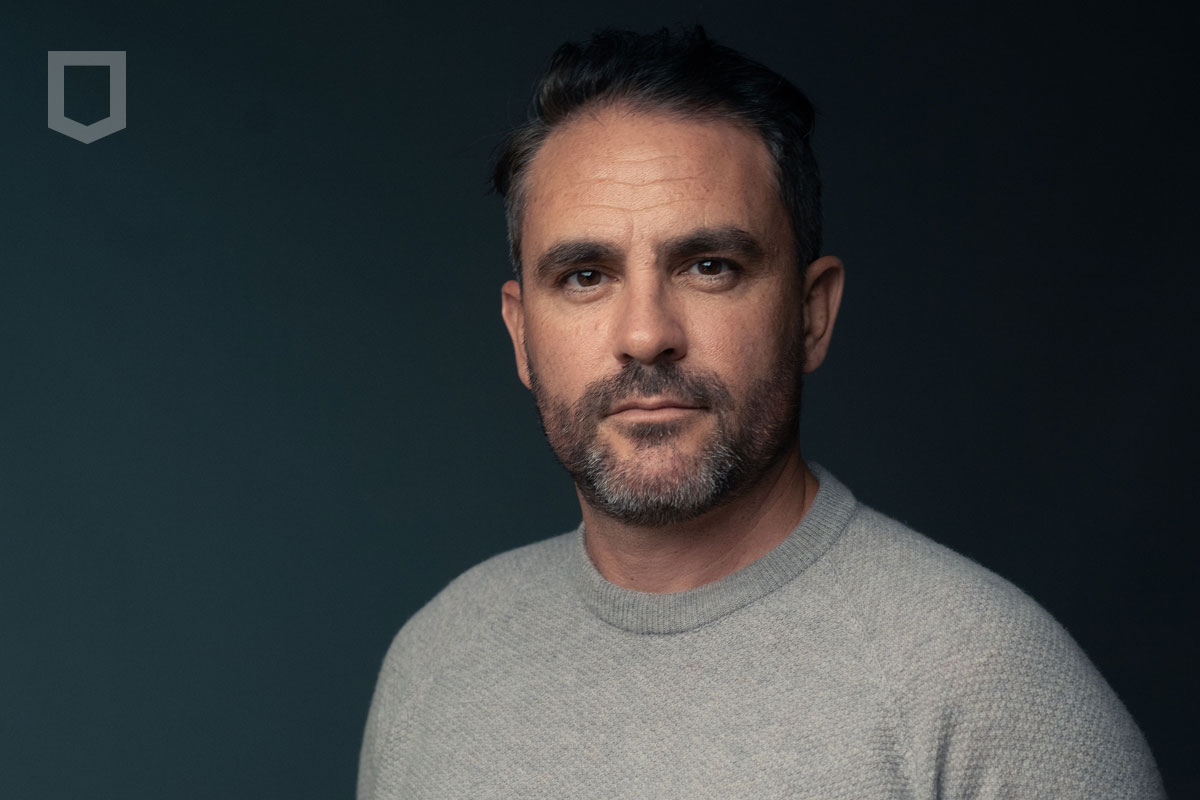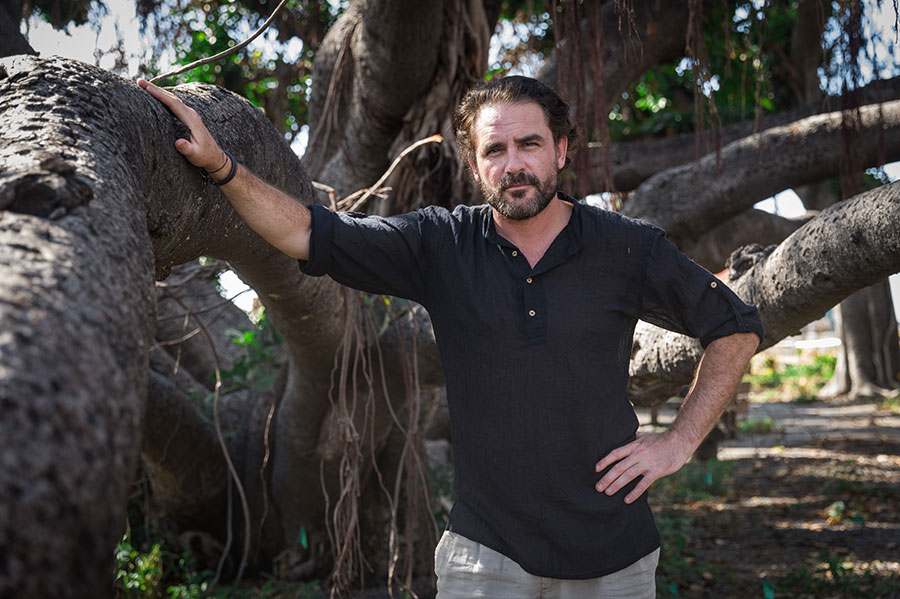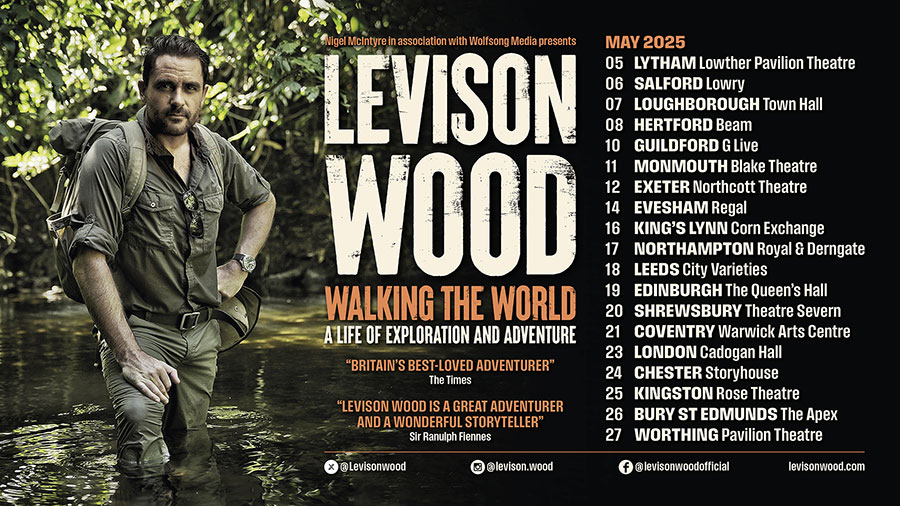In this exclusive interview, renowned adventurer, author, and storyteller Levison Wood shares his deep connection to nature and his passion for protecting the world’s forests. From his experiences in ancient rainforests to the lessons he’s learned from Indigenous communities, Levison explores the resilience of nature and the vital role trees play in our lives. His reflections inspire us to rethink how we view the natural world and remind us of the importance of preserving it for future generations.
Levison Wood Exclusive Interview | Lifestyle Pocket Guide
Hey Lev! Could you kick things off by telling us some good news?
Good news is, I just got back from Bali which was lovely! The world is still spinning and the sun is still shining, despite what it might look like on the news. More good news: I’m currently writing a book about trees—the long-standing and symbiotic relationship between humans and nature. When you dive into a subject like that, it’s easy to get slightly depressed by the bad stuff, but in researching this particular book, I’ve come across so many amazing good news stories about people doing really good work. People are dedicating their lives to conserving natural habitats, protecting wildlife, and protecting forests—so the good news is, all is not lost. There are a lot of amazing people out there doing good work.
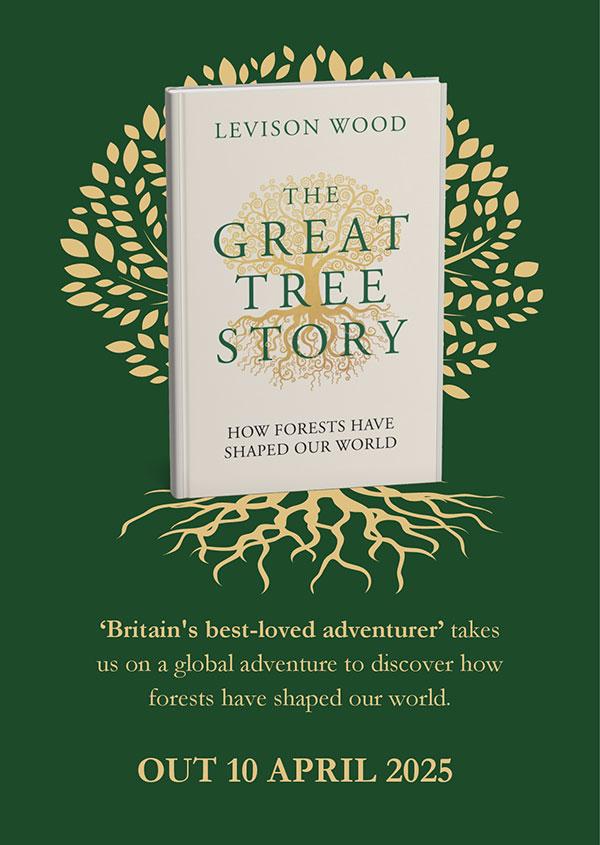
I’ve spent the last three years—since 2021—on what has been my passion project. Nature and trees have always been in the background of my documentaries and films, but I thought it was high time that they got the recognition they deserve. I’ve been on this global tree adventure for the last three years, in between other things. It’s been amazing—going to ancient forests, meeting scientists, conservationists, and spiritual leaders.
Places like Hawaii suffered from terrible wildfires a couple of years back, and yet some of these trees are still standing as symbols of hope. I went to Ukraine last year to see how rangers are protecting forests on the frontline of the war against Russia. Everyone’s got a good tree story, and I’m trying to tie it all together in this global tree adventure. The Great Tree Story is a story—a history book—going all the way back to when we evolved out of forests, bringing it right up to the present day.
What, in your opinion, is the most fascinating forest and why?
Obviously, the Amazon is the most famous, but it’s so huge—there’s so much that we don’t know about the Amazon. New species are being discovered every day, and there are still medicines there that we haven’t even discovered yet. There’s a lot of Indigenous wisdom that I find fascinating about the Amazon.
I found some interesting tree facts online—you may have heard: trees in forests communicate through an underground fungal network called the Wood Wide Web…
True story, yeah! The mycorrhizal network, it’s called. Basically, when you dig around in the soil and you see that white stringy stuff, that’s fungal connective tissue. All of the trees in the forest are interlinked— all of the roots are linked via these white stringy things and they can communicate. They can share nutrients, they share carbon—if a tree is dying, all the trees will club together and pass nutrients through these networks to the dying tree.
There’s a lot of incredible new science coming out about how trees can communicate, not just through the fungal networks but through pheromones. They emit chemicals to warn other trees of danger—whether that’s a type of insect that’s going to eat them, or a browsing herbivore like a camel or a deer. It’s incredible—they are literally talking to each other.
Wow, that’s amazing! Another fact that grabbed me is that high winds cause trees to produce strange melodic sounds—certain species of trees rub their branches together, causing eerie, creepy tunes.
[Laughs] There’s some incredible research going on into how plants and trees can react to music as well. Since the 1960s, there have been experiments—there’s a famous Instagram meme where they put a load of plants in a theatre and played an orchestra to them, testing to see how the plants would react.
King Charles has been talking about how he talks to his plants for many years now—it’s only now that we’re realising that plants do react to vibrations.
There was a farmer in the US who did an experiment where he played classical music to his cornfields, and the ones that received the music had a 20% higher yield than the ones that didn’t. It turns out the Chinese have been doing it for ages—they’ve been doing it in their factory farming—they play them music to get that higher yield.
It all goes to show that plants and trees are a lot more intelligent than we thought.
It’s fascinating. On my windowsill at home, I’ve got loads of plants, and cuttings of Bonsai trees that I’ve re-potted.
You better get singing then!
Yeah, exactly haha! Two or three summers ago, I found and planted an acorn—it’s now a 4ft tall tree. I’ve already re-potted it three times and have to work out what to do with it. I might plant it in the garden, but it’s going to grow enormous.
In a similar vein, I did a bit of tree planting myself. It’s such an important subject. Up until three years ago, I didn’t have the faintest idea about anything to do with trees—I’ve done a lot of research on the subject and honestly, I think that the relationship we have with nature has been severed a lot in recent times.
A lot of the world’s problems can simply be resolved by having a better connection with nature.
The idea of forest bathing in Japan—it’s now prescribed on their National Health Service. If you’re feeling ill or depressed, you can get a doctor’s note saying “Go for a walk in a forest,” because it’s proven that spending time in nature—taking in the sights, the smells, the sounds, the pheromones, the chemicals of the natural world—is good for our health. The more people that realise that, I think, the better.
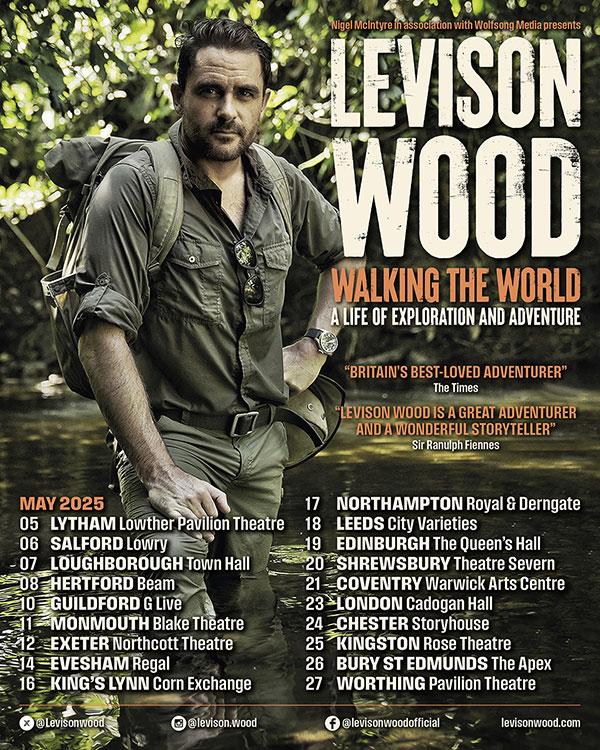
Exactly. Trees have been like the back of our own furniture for so long—it’s been revelatory for me to realise just how important and incredible trees are. The role that they play—not just physically, but the role they have played in culture and in religion throughout the ages. We evolved out of forests hundreds of thousands of years ago and are creatures of the forest. It’s literally in our genes, that connection. It’s only really the last two or three thousand years that we’ve been living in cities and have severed that connection to nature. But it’s still there. It’s just as important now as it always has been.
I think we’re at this critical juncture in human existence where we face a stark challenge—if we don’t start to reconnect with the true nature of ourselves, which is in line with forests and with nature, then we’re going to come unstuck.
Part of this research that I’ve been doing is exploring just how crucial that role is—of trees. You know, Christmas trees—all these things date back to the Pagan tradition. Yew trees in churches—people often see them in the British countryside. You go to your old church and there’s a Yew tree—well, the Yew tree has been there longer than the church. Some of these trees are two or three thousand years old. There’s one in Wales that’s five thousand years old.
Of course, the Yew trees were worshipped by the Druids and our Pagan ancestors, and because they were sacred sites, churches were placed there later.
So, trees have played this really important role. Not just in our culture but all around the world—I’m sure you’ve drunk a pint at a pub called The Green Man.
The Green Man is this symbol of our connection to nature, and you find The Green Man not just in the British countryside but as far afield as India, Iran, and places like that. This symbolic idea that we’ve come from the forest is deeply ingrained in our psyche.
Wow, I didn’t know The Green Man was that far worldwide!
Yeah! You can see it in Roman temples. In Rajasthan, there’s a temple that’s got The Green Man—it’s this ubiquitous figure. On parts of this journey, I’ve been to places like India, the Himalayas, and Africa where you’ve got the Baobabs that have been worshipped. In the Amazon, Totem Poles in North America—wherever you go in the world, there are some incredible tree stories.
One place I went to with no trees—Greenland. It used to have a lot of trees, but the Vikings cut them all down, and there’s a good example of what happens when we get a bit carried away and exploit nature.
Easter Island is another example of a civilisation—I’m not sure if you saw Graham Hancock’s Ancient Apocalypse on Netflix recently, but he talks about all those big statues—the Easter Island heads. That entire island was forested. The humans came and cut down all the trees. The people were stuck, they couldn’t even build boats to leave, and so that entire civilisation imploded because of overuse and living an unsustainable life.
I think there’s a lesson in that for the world at large.
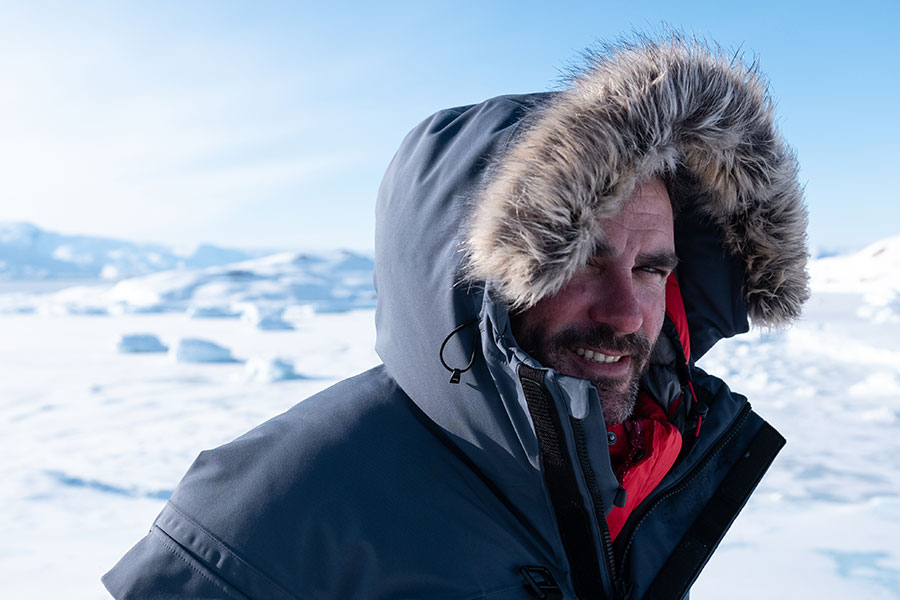
Image Credit: Evangeline Modell
Where’s the most remote place you’ve seen a tree?
That’s a good one! I’ve been to the Arctic, and I’ve been to the far northern tree line in places like Finland and Norway—you can see the line where the trees stop. Even in the desert though, in really remote deserts, you can find the occasional tree just sprouting up in the middle of nowhere. I was in Hawaii on a volcano earlier this year and even in the cracks of the lava, trees will thrive. It goes to show just how resilient trees are, given the opportunity.
In terms of your lifestyle… when you’re not on these expeditions, what is your lifestyle like?
Because I essentially work for myself, I’m constantly having to come up with new ideas—essentially, a lot of business development. I pitch ideas, I’m researching for my next project, and a lot of it is just planning ahead. I tend to work 18 months to two years ahead of my journeys or projects.
I’m diversifying a bit now—it’s not just the expeditions. I’ve just directed my first film, which is a drama. It’s been really good fun and totally different from what I’m used to, but another creative outlet—and maybe more of that.
I really enjoy the creative process, and scriptwriting is something I’ve gotten into more recently. But I’m still going to be doing big expeditions, and I quite enjoy using different genres to tell stories, because I think life is about storytelling.
I think that’s kind of the future—it’s almost going full circle. There was a time, 20–30 thousand years ago, when people would hunt, gather and sit around a campfire telling stories.
I think we’re almost going back to that stage now, where life might become a bit more simple—if we don’t have to do the hard graft.
When you approach these various different projects and mediums, what do you aim to achieve through each outlet that you use? What is your goal?
I think the whole point of storytelling is to get people interested in a subject, and that’s why I chose the subject of trees for my latest book—to tell a story about that human connection to nature.
You can do it with any topic. I’ve really enjoyed telling my stories about adventures through my travels.
It’s the impact you can have—you can change people’s lives. I’ve had numerous letters and notes of thanks from people who’ve read my book or watched a film and said it’s inspired them to quit their job and build a hospital in Nepal or go and volunteer to teach.
I certainly didn’t set out to do that, but it’s very rewarding to know that people will take some inspiration from these stories.
So what I’ve tried to do in more recent times is use my platform—my books and my films—to bring awareness and attention to causes that I think are important.
The last two TV series that I’ve done have been around wildlife and conservation. That’s something I’m very passionate about. I work with a number of conservation charities. Why not get more people interested in lions, orangutans, or polar bears—and now trees?
I embrace the idea of using storytelling to get people who wouldn’t otherwise be interested in a particular subject—interested.
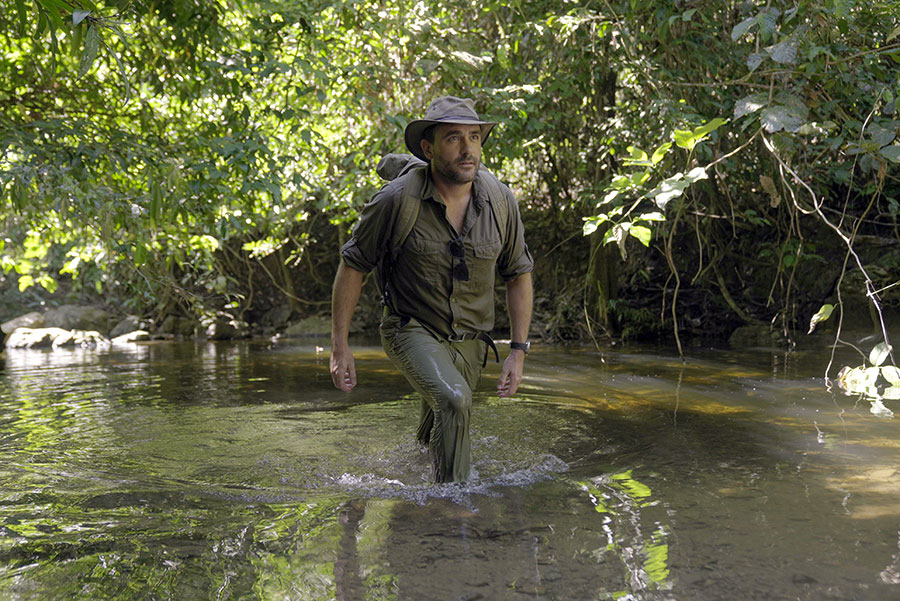
Image Credit: Jonny Pickup
Honestly, I have been hooked on your content since Walking the Nile. It’s like the content you produce taps into the natural interests that I have. In terms of the adventurous spirit that you’ve got and the storytelling side of things, how did it all come about, and how did you end up doing what you do?
The interest in storytelling was there—I guess I didn’t quite appreciate the impact it could have. But I think it came from my parents—both teachers. They read to me a lot as a kid. I think that had a really deep impact on me. That’s why it’s so important to read to your children and encourage them to read. I remember at the age of ten, my dad reading The Hobbit and Lord of the Rings. I think it was the Toby Robinson version of The Odyssey—the kid’s version—and I remember just being hooked on this idea of fantasy, adventure, and Greek mythology.
It was those stories of slaying dragons that got me interested in literature more generally, because it’s the kind of stuff that kids love.
But it’s all symbolic—and the idea that we can all go out there and slay dragons in our own little way. I think the idea of encouraging people to have a quest, to have a mission, is so important—because we all can! It’s important to never lose that, even as we grow up and become adults.
I think we all have that mission. Okay, we might not go and find the dragon in the cave, but I think we can all do something that gives us a fulfilling and rewarding life away from the humdrum and monotony that we’re accustomed to—thinking that’s all we deserve. Because we don’t. We all deserve to go off on our own adventure, and I think that it’s totally possible!
Amazing words, Lev! That’s why we launched Lifestyle Pocket Guide—to share constant good news stories at a time when we feel people need it, to help motivate and inspire them.
Totally, I couldn’t agree more. I think it’s brilliant and I think it’s important to focus on the positive human stories—because there are plenty of them. And we need that in our lives, don’t we?
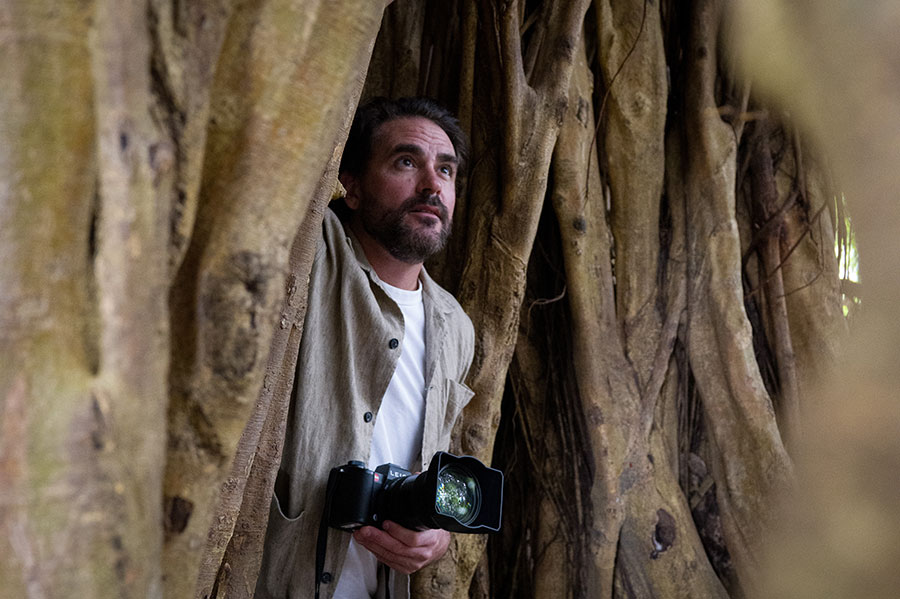
Image Credit: Evangeline Modell
Absolutely! What are your top 3 songs on your playlist?
It’s interesting because the film that I’ve just been directing is all about a music festival. It’s a bit weird, it’s a bit trippy—it’s about a guy that goes to a festival and slightly loses the plot. I’ve really enjoyed curating the soundtrack for that, and I’ve been working with Danny Rampling, the house DJ.
Oh wow, brilliant! I’ve got some of his records at home!
Ah brilliant! Yeah, he was ex-Paras back in the day, so he’s been a huge supporter of veteran stuff. I reached out to him, and we’ve been collaborating on this film. It’s been great. I’ve been using some of his music—some old 90s tracks.
It’s kind of a bit of a musical genre—so 1960s-style Motown mixed with some 90s dance, mixed with some slightly esoteric Amazonian tribal stuff. It’s a real journey. I don’t know if you know Satori and Monolink—that kind of vibe. Polo & Pan. I’ve got a whole mixture of stuff on my playlist.
So, you like your dance music then, your house?
Yeah, I grew up in Stoke in the 80s. I used to go to quite a few raves back in the day, haha.
Who’s the most famous person in your contacts, and what’s a story relating to them?
I was in the army with Prince Harry. We dug holes together for 12 months back at Sandhurst. We were quite close at one point. I still see him occasionally at various events.
I’ve met the Dalai Lama, which was pretty cool. I’ve met George Clooney. I once got invited by the King for a cup of tea at Clarence House.
I’ve met some very interesting people over the years.
Have you ever met Sir David Attenborough?
Yes, I’ve met Sir David Attenborough. He’s involved in a charity that I’m an ambassador for—Tusk Trust. He and Prince William—so yes, I’ve met Sir David a couple of times.
David Beckham… I used to work for David Beckham when I’d just left the army. I was security—basically his bodyguard—for a little while.
Oh wow! I once washed his car haha, back in the Spice Girls days.
Did you? I once drove his Bentley, haha!
Ah cool! What’s the most fascinating item that you own from a historical or cultural point of view?
I’ve got a few interesting artefacts. I’ve got a megalodon tooth from a prehistoric shark that’s probably 30 million years old. I’ve got a sword from the Battle of Omdurman in Sudan. I even own a few bits and pieces that were owned by Lawrence of Arabia—I’ve got one of Lawrence of Arabia’s headdresses in my collection. So yeah, I’ve got quite a few knick-knacks that I’ve been collecting over the years.
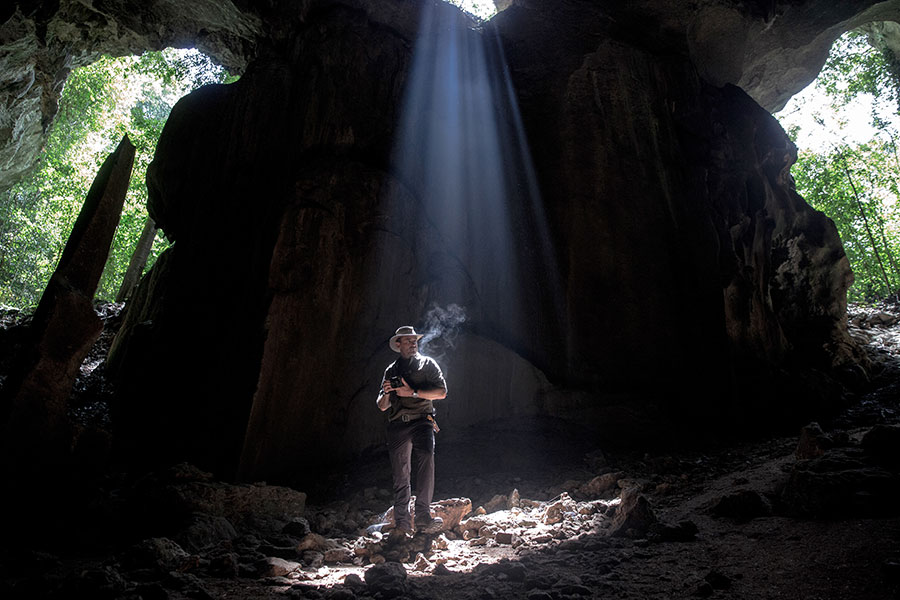
Image Credit: Jonny Pickup
Can we talk about your script-writing?
Yeah! I’ve been working on a couple of scripts. The Burn, which is the film I mentioned—it’s a short film which we’re going to take on the festival circuit next year. The idea behind that is we can get some interest and maybe go and shoot a feature-length film as well, which would be amazing. We’re working with a military charity, SSAFA, to raise awareness about veterans’ mental health. It’s about a veteran who comes back from the war in Afghanistan and is struggling to reintegrate and communicate his traumas with his partner. So it’s telling a mental health story, but in a slightly fun setting—being the festival. So yeah, it’s been really interesting working on the script and working with actors. We shot the whole thing at an actual festival over the summer, which was pretty chaotic but great fun. Hopefully more of that.
Is that all new to you, that side of things?
Yeah, totally! It’s something that I’ve been studying in bits for the last 12 months, and thought I’d give it a go—and I’ve really enjoyed it.
Good for you. Who’s your favourite scriptwriter?
I’ve studied a bit about the work of people like Oliver Stone—I’ve been reading his autobiography. Platoon was one of those films that I grew up watching, and it kind of inspired a generation, because it’s about the Vietnam War but takes an anti-war stance. It’s like—how do you tell a story that isn’t just pure propaganda? And I think there’s a good example there. Oliver Stone is a very good example of someone who does that really well.
What’s your favourite movie of all time?
Zulu! I loved Zulu growing up—my dad made me watch it.
What subjects did you enjoy at school?
History, Geography, and English. They’ve all come in quite useful. I was never any good at Maths. Art as well—I really enjoyed art!
Finally, Lev—what projects are you most excited about in 2025?
Hopefully, off the back of The Great Tree Story book, there might be a film as well—or a series. So that’s what I’m pitching next. I’m going into production on another movie—I can’t talk about that, but it’s a pretty big one. A big-budget Hollywood thing that I’ve written a script for, but my lips are sealed on that. And hopefully, some more big adventures. I’ve got another big expedition that I’d really like to do, so I’m hoping that the powers that be in television will say yes to that one—we’ll see. But lots more travels.

